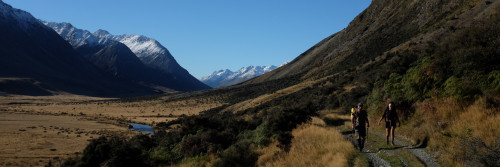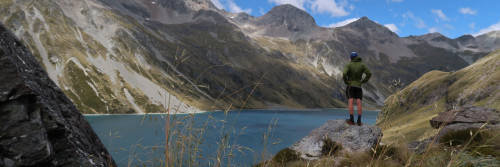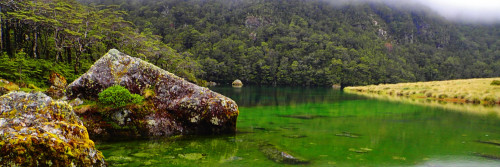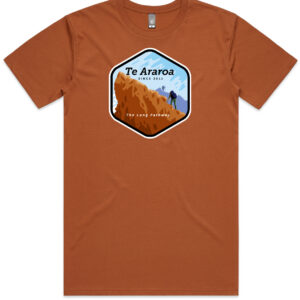News and media
Te Araroa contributing millions to regional New Zealand
Business is booming for cafés, dairies, campsites and other enterprises along the length of New Zealand’s national Te Araroa Trail.
More than 550 people have completed the 3,000km trail over the past year, stopping to re-supply in urban centres and rural communities as they walk from Cape Reinga to Bluff.
Te Araroa Trust chair David McGregor said the record number of walkers had contributed an estimated more than $5 million to the economy, with walkers reporting an average spend of between $7,000 and $10,000 throughout their four to five month journey.
The tens of thousands of other people walking individual sections of the trail on shorter trips were also providing a boost for businesses in many small towns through their purchases of coffees, ice creams and other “vital supplies” before or after their walks, he said.
“Te Araroa walkers are often spending money in places mainstream economic development initiatives don’t touch. The trail is giving businesses along its route a nice little leg up, and the number of walkers is just going to keep on growing.”
Among the many businesses benefitting are Main St Lodge, in Kaitaia, and the Mangamuka Dairy, in the township of Mangamuka on the eastern boundary of Northland’s Raetea Forest.
Main St Lodge manager Suzie Clark said the number of Te Araroa walkers staying overnight at her premises had more than doubled in the past two years and she was now seeing walkers coming through in winter, as well as summer.
“In the time I’ve been here it’s just exploded. Many of them start their journey at Main St Lodge before walking to Cape Reinga and then back through Kaitaia, staying here again before they continue south.”
The Mangamuka Dairy is one of the few places trail walkers can re-supply as they pass through Raetea and Omahuta Forests. The store’s bacon and egg burgers have become legendary among walkers, with many of them mentioning the burgers and owner Eliza Chapman-Kete’s hospitality on their travel blogs.
“The impact on the dairy is huge,” Ms Chapman-Kete said. “It’s been quite hard case. One year all the walkers wanted battered mussels because word of mouth had spread. These days most of them buy bacon and egg burgers, chips and a coffee.”
Further south, near Wellington, Paekakariki’s Perching Parrot restaurant is reporting a similar boom. Co-owner Nicole Duke said the number of people through the restaurant’s doors was up by about a third on some days following the opening of the Paekakariki Escarpment Track section of Te Araroa last year.
More than 60,000 locals and visitors have walked the escarpment track in its opening year, with many making a trip into Paekakariki, at the start of the track, to buy refreshments.
“We started having record busy days after the track opened. It’s had a big impact on our business and brought a lot of life to the village,” Ms Duke said.
South Island businesses are seeing the benefits too. The majority of Te Araroa walkers go from north to south, setting off from Cape Reinga in October or November so they reach the South Island during the drier, warmer months.
Warren Bevin, who purchased the Colac Bay Tavern and Campground near Riverton a few months after Te Araroa officially opened in 2011, said around 90 per cent of the people who walk the full length of the trail visited his business.
“Throughout the season we see a big impact. Businesses in Riverton are doing well and it’s given me confidence to add new cabins and upgrade the campground.”
A number of homestays had been established around Riverton as a result of the trail and some Southland farmers had converted their woolsheds into accommodation for walkers, he said.
“It’s great to see country people looking after the walkers.”
Mr McGregor said managing the trail for the benefit of New Zealanders and local communities was a priority for Te Araroa Trust, which manages the trail.
Over the coming year, the Trust would focus on ensuring the long term sustainability of the trail and embedding the trail experience into the hearts and minds of New Zealanders, he said.



